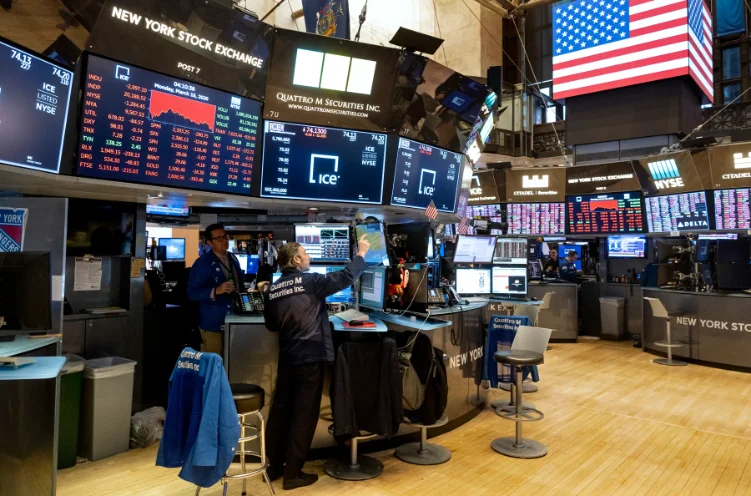On Friday, Asian stocks followed the positive direction of Wall Street’s expected performance. This was largely due to Amazon reporting better-than-expected earnings, which boosted investor confidence. Meanwhile, the bond market continued to rally as there were indications that inflation in the United States might be easing.
Investors were closely watching U.S. economic data to be released later in the day. This data was expected to reveal a 0.3% increase in core inflation for the month of September, which would bring the annual inflation rate down to 3.7% from the 3.9% recorded a month earlier.
In the previous night, the European Central Bank made the anticipated decision to keep interest rates unchanged. This move briefly caused the euro to drop to its lowest level in two weeks. The U.S. dollar was trading above the critical 150 yen mark, and traders were vigilant for any signs of intervention ahead of the upcoming policy meeting of the Bank of Japan scheduled for Tuesday.
S&P 500 futures went up by 0.4%, and Nasdaq futures saw a more substantial increase of 0.7%. This was due to Amazon’s stock surging by 5% in after-hours trading. Amazon released a statement after the U.S. market closed, where they predicted increased holiday season sales and a stabilization in their cloud business.
On Friday, MSCI’s index for stocks in the Asia-Pacific region, excluding Japan, rose by 0.6%. This was a positive shift after it reached an 11-month low just a day ago. However, it’s important to note that this index is still set to record a weekly loss of 1.2%.
Tokyo’s Nikkei index increased by 1%, but it was still down 1.2% for the entire week.
China’s blue-chip stocks remained relatively stable, showing little change, while Hong Kong’s Hang Seng index experienced a 1% surge.
Recent data from the United States confirmed that the economy is holding up well, and inflation is showing signs of easing. The U.S. economy expanded by almost 5% in the third quarter, but experts anticipate a slowdown from this point onward.
Nathaniel Casey, an investment strategist at wealth management firm Evelyn Partners, commented on the situation, saying, “The U.S. economy once again pleasantly surprised us with strong GDP growth in the third quarter of 2023.”
However, as real interest rates continue to rise, they are putting extra pressure on the real economy. This is expected to slow down consumer spending in the upcoming quarters, which will act as a brake on the U.S. economy.
There is a lot of attention on the underlying inflation, which has decreased significantly in the past quarter. This has raised hopes that the U.S. personal consumption expenditures (PCE) for September, set to be released on Friday, will show lower inflation. The PCE is a key measure of inflation that the Federal Reserve closely monitors.
Goldman Sachs has adjusted its predictions, lowering the estimate for monthly core PCE by 1 basis point to 0.27% and the estimate for headline PCE by 1 basis point to 0.33%.
According to the CME FedTool, the likelihood of a rate increase in November has been eliminated, and the probability of a December rate hike has dropped to 19.8%, down from 29.3% just a day earlier. There are expectations of rate cuts next year, with a total of around 70 basis points.
The interest rate on 10-year Treasury notes, a significant measure of borrowing costs, increased by 2 basis points to 4.8657%. This came after it had dropped by 10 basis points the previous night. Earlier in the week, it had crossed the 5% mark for the first time in 16 years.
The Japanese yen’s value against the U.S. dollar reached a fresh one-year low, at 150.77 per dollar, and it was last traded at 150.31. This wasn’t far from the three-decade low of 151.94 it reached in October of the previous year, prompting Japanese authorities to take action in the currency market.
There’s speculation that the Bank of Japan (BOJ) might raise the existing cap on interest rates at its meeting next week, which is making traders nervous.
The price of gold remained stable at $1,985.79 per ounce, not much below the 2-1/2 month high of $1,997.09 it reached earlier this month. Investors are turning to safe-haven assets due to the ongoing conflict in the Middle East.
Oil prices saw an increase on Friday, recovering some of the losses from the previous session when they had dropped by more than $2 per barrel. However, they are still on track for their first weekly decline in three weeks. The concerns about the Israel-Gaza conflict potentially disrupting oil supplies had previously pushed up oil prices, but that premium is now easing.
Brent crude futures rose by 0.5% to $88.38 per barrel, while U.S. West Texas Intermediate crude was priced at $83.58 per barrel, showing a 0.4% increase.





